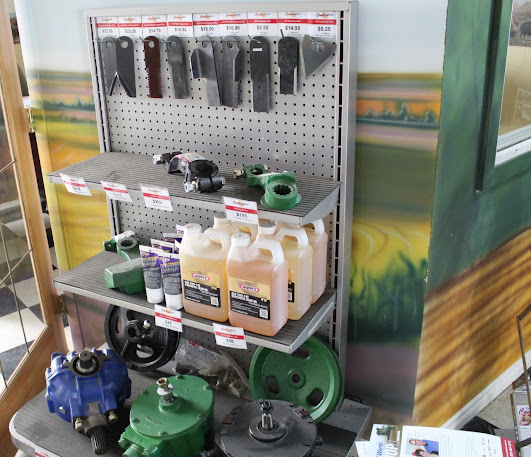Operation and Efficiency of Different Types of Combines
Harvesting Using a Combine
First, a word about the operation of the different types of combines. In the tractor-pull combines, a tractor supplies the power to the threshing and harvesting machine. It also pulls the machine and helps with separating and cleaning. The power gets transferred from the power shaft of the tractor. It involves a slight change in the operating principle. The separate engine from the tractor does the cutting and thrashing operations of the crop.
Types of Combines In Use
The other model among the different types of combines is the self-propelled combine. It runs by itself with the help of an engine attached above. This engine has two significant roles. One is to drive the machine and the other is to help with operations related to the harvest. We see two types of self-propelled combines:
1. Rotary combine harvesters.
2. Conventional combine harvesters.
In the conventional combine, the main compartments take care of the straw walking and tangential threshing. Whereas in the rotary combine model, we see the axial flow threshing take place.
Stop Rotor Loss during Harvest
Most harvesters lose grain up to 2-5 bushels per acre. This amounts to losses of $25k for one thousand acres of soybeans which is huge. You can avoid this loss by choosing the best harvester combine from the different types of combines designed to prevent rotor loss. This works for all crops from rye, oats, and wheat soybeans, sorghum, and corn. Crop gets thrashed by the basket and thrashing drum. The drum speed remains variable so we can use the same harvester for a wide range of crops.
Parts of the Conventional Combine
The main parts of the combine include the chassis with the fuel tank and engine, ground power trails, wheels, and steering mechanism. It has a combine header along with a threshing separating system. In different types of combines, the threshing system works according to the design by the manufacturer. In the conventional harvester, we see the separating straw walkers and the threshing separating system. There is a cleaning system alongside the process that conveys, stores, and discharges the grain.
Use an Improved Combine
By using an efficient combine, one can decrease the damage to the grain. This takes place due to the material on material threshing so that the fines, cracks, and splits are minimal. Improvement in the quality of the harvest leads to an increase in profits. Another way to enhance the profits is by increasing the ground speeds by 1-2 mph. For this, the modern farmer increases the threshing surface so that there is no need for an overload separation section.
The farmer gets good driving control in a separate cab with a driving seat. The instrumentation and the process control console are conveniently placed near him. This combine is most helpful for the farmer to help increase the profit.





Comments
Post a Comment